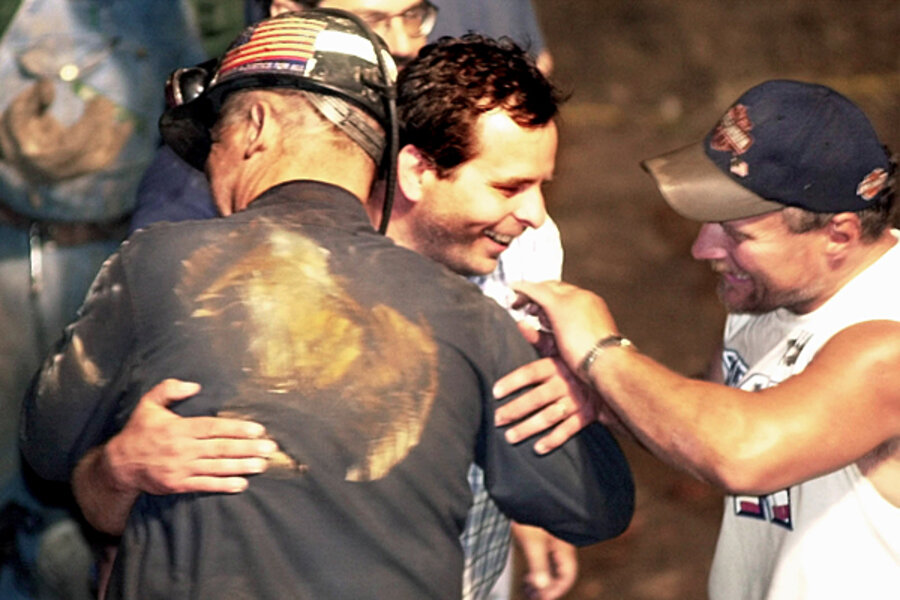In 2002, nine miners were trapped underground for three days at Pennsylvania's Quecreek Mine, which had flooded with water. Rescue efforts required speed and ingenuity as the waters rose and threatened to drown the miners.
A drilling rig initially bored a hole through 240 feet of rock ( the Chilean miners are trapped 2,200 feet underground) to the trapped miners to provide them oxygen. But the bore hold also allowed rescuers to pump air into the shaft to create pressurized air pocket that prevented the water from entering, according to the Pittsburgh-based Post Gazette. The newspaper continued, in its 10-part series on the rescue efforts:
"For a while, mine-safety workers toyed with the idea of sending divers into the mine. They might be able to organize such a daring rescue mission before the super drill could get cranked up. But the danger of swimming through 1.6 miles of flooded shafts seemed overwhelming, even for the best frogmen."
Instead, a rescue hole was drilled into the rock, and after three days pierced their hideout on July 28. Rescuers lowered down a tube-shaped cage, which the miners climbed inside one by one.
Mining remains one of America's most dangerous jobs, despite improvements in mine safety. Implementation of stricter inspection and safety standards have cut the number of deaths from a high of 3,242 in 1907 to 18 in 2009, according to statistics from the Mine Safety and Health Administration.





